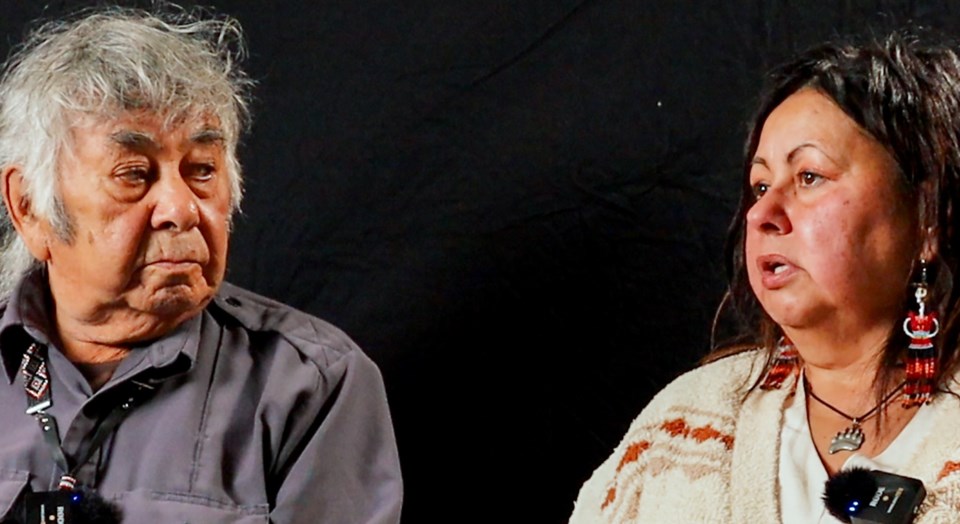Musée Heritage Museum tends to be quiet most days. However, on Saturday, July 13 the main gallery was packed with more than 80 people who dropped by to celebrate the opening of Hear Our Voices: Michel People and Residential Schools.
“It was very well-received," said Dayle Callihoo-Campbell, one of the exhibition’s main drivers. "Those that gave interviews, especially the survivors felt wonderful. It felt very healing for them.”
Hear Our Voices is an exhibition that details the horrible conditions Michel children and youth endured in residential schools. It explores how those shocking experiences affected survivors as adults and changed the direction of their lives and those of their children.
The multimedia, technology-based showcase supports panels, photographs, screens and headphones where videos of survivor interviews run in 15-minute loops.
Calliou Group, an Indigenous company that handled filming, interviewed 22 survivors for the documentary series. Six are direct survivors from the residential school environment. The remaining are inter-generational survivors whose lives were affected by witnessing the suffering of Elders.
“The objective of these interviews was to have the survivors tell their stories and have them heal so they could live happy, productive lives and have them come into our hearts,” said Maureen Callihoo Ligtvoet.
Th exhibition displays an ugly time in Canada's history when the popular thinking amounted to diminishing and degrading Indigenous people and their culture. The display gives survivors back their voices. In presenting the Michel People's collective past, the exhibition is a tool in working toward a future of respect, education and collaboration
“We hope this exhibition will be a bridge between Indigenous and non-Indigenous communities, and maybe it can be the seed that helps our own families," Callihoo Ligtvoet said. "We have many success stories as health care professionals, lawyers, politicians, educators, farmers and artists. But first we have to go back and find ways to heal in the present.”
Callihoo Ligtvoet’s father, Ernie Callihoo, is an original survivor. On screen, the silver-haired, plain-spoken man of few words is oddly charismatic. He was forced from his home and placed at St. Albert’s Youville Residential School run by nuns. Surprisingly, in the documentary videos, Ernie’s speaks very little and in short sentences.
“He has a hard time with his voice. For years he didn’t have the ability to tell his story. It was kept hush-hush. Nobody talked about it,” said Callihoo Ligtvoet. Residential schools were never spoken about in her home, and she grew up believing her father went to boarding school.
“At the residential school they were beaten for talking. They were not allowed to voice their opinions or desires. It became hard for him to use his voice. But every time he shares the story, a little bit of the pressure goes away.”
In the documentary, Ernie speaks about how boys were forced to rise at 5 a.m. to milk cows. Girls worked indoors cooking, cleaning and washing laundry. Throughout the day the boys tended livestock, hoed gardens, picked roots and spent hours in chapel praying.
“The experience was not good. They endured harsh punishments and sometimes for reasons they did not understand. They did not get an education. My dad does not remember going to school. It was all praying and working. That was why education was something he encouraged for his children and grandchildren. He believed it was a privilege,” Callihoo Ligtvoet said.
Ernie's lack of education mistakenly made him feel “he was below everyone else. You feel you don’t have a voice because no one wants to hear it. He went to residential school, but couldn’t talk about it because the trauma was so intense.”
Today Ernie and his fellow survivors continue dismantling the chains of abuse tying them down. Calihoo Ligtvoet encourages people to experience the project with an open mind and heart.
Hear Our Voices is open at the museum until Oct. 12.




